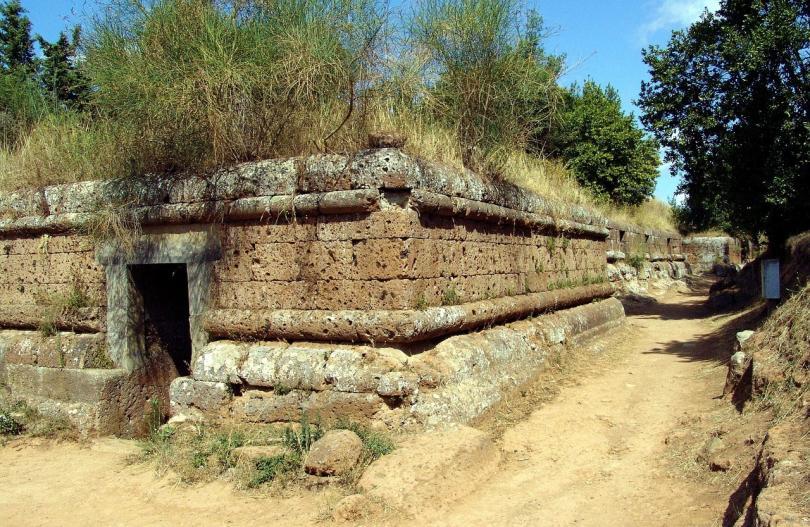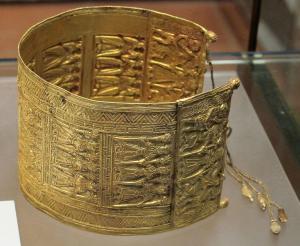Cerveteri is an attractive village on a tufa rise, with medieval quarter. The church of Santa Maria is a modern construction, added to a 12th cent. Romanesque church. It contains a panel of the Madonna and Child (1471) by Lorenzo da Viterbo, a Renaissance altar and panel depicting the Redeemer by an unknown 16th cent. artist.
In the Municipio is a panel of a Saint by Perin del Vaga (1501-1547), and a 16th cent. Flemish triptych depicting the Adoration of the Magi. The Necropoli di Cerveteri, together with that of Tarquinia, is the most important of its kind. Exploration began in the mid-19th cent., and was intensified at the beginning of the present one.
The 8th cent. B.C. tombs are open in the rock, the 7th cent. B.C. ones have stone covers and mounds, those from the 6th to the 2nd cent. B.C. are in the form of rooms with a vestibule, while those of the 4th-lst cent. B.C. are hypogea without mounds.

Banditaccia Tomba Dei Capitelli
Mention can be made here of the tomb of the Capitals, the tomb of the Funeral Beds, the tomb of the House with thatched Roof, which is the most ancient of all; the tomb of the Dolii, the tomb of the Reliefs, also known as the Beautiful Tomb, the most interesting one in the whole necro-polis, belonging to a Matuuna family, as the recently-deciphered Etruscan inscription reveals; the tomb of the Little House, made up of six communicating compartments, and the tomb of the Cornice; further off, outside the confines of the necropolis of Cerveteri, is the tomb of Marce Ursus, the tomb of the Greek Vases, the raised mound of the Colonel, the tumulus of Ophelia Maroi, from which Greek and Etruscan vases of the 6th cent. B.C. have been taken; the tomb of the Doric Columns, the tumulus of the Shields and Chairs, where there are small thrones and funeral beds, the tomb of the Painted Lions, and the Tumulus of the Painted Animals, with numerous com-partments, the tumulus of the Ship in a room containing a picture of a ship, the tomb of the Sarcophaghi, with three alabaster sarcophaghi, the tomb of the Triclinium, the tomb of the Inscriptions or of the Tarquins, the tomb of the Alcove, etc.
The Necropoli del Sorbo is a large ancient burial-ground, with individual tombs; in the Regolini-Galassi tomb (named after the scholars who explored it in 1837) there were a large number of fine oriental-style ornaments of the 6th cent. B.C. which have been transferred to the Gregorian Etruscan Museum. In the Necropoli di Monte Abetone, situated on tufa rocks, are the Campana tomb, and the TorIonia tumulus, with the tomb of the Chairs.





Leave a Comment